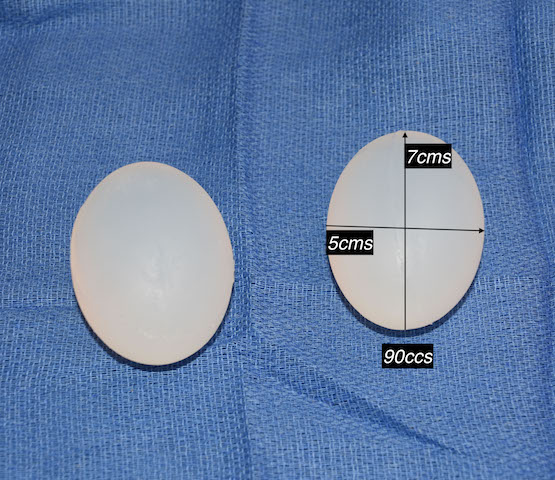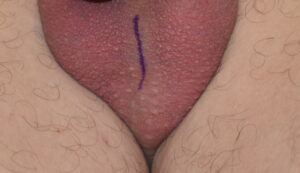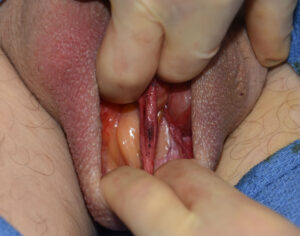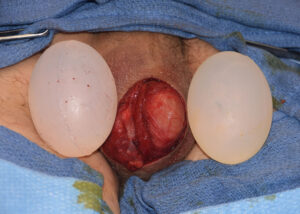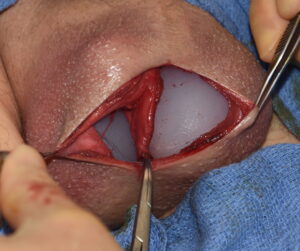Background: As men age erectile dysfunction is not uncommon and multiple therapies exist to treat it. Medications, surgery and implants are all options that have various roles in its treatment. Penile prostheses, many of which can be manually activated and deactivated, are a well known surgical device that is widely used. It addresses the most important component of erectile dysfunction.
For some men who have penile prostheses they still have some inadequacies about their sexual appearance. With age, and particularly with the use of testosterone hormone supplementation/replacement, the testicles can atrophy and the shape of the scrotum that contains them changes. The overall scrotal size may decrease but more commonly the sac becomes deflated. Between the increase of the size of the penis and the decreasing testicle size, an apparent penoscrotal aesthetic disproportion can develop.
The aesthetic treatment of small testicles or correcting the penoscrotal disharmony in penile prosthetic patients requires the use of testicle implants. While standard testicle implants may work for some, anything less than a 6cm implant size will usually be inadequate for most patients. It is important to realize that with increased penile lengths comes the need to be greater than the natural size of their now atrophied testicles.
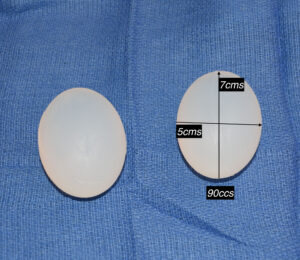
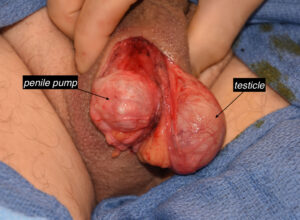
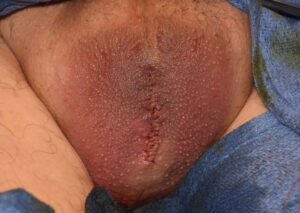
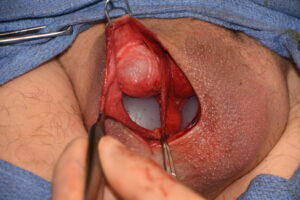
Case Highlights:
1) Large custom testicle implants are in the size range of 6 to 7cms (long) and with volumes of 70 to 90ccs.
2) Large custom testicle implants are placed through a midline scrotal raphe incision and, in the presence of small/atropied natural testicles, are positioned side by side in a displacement technique.
3) The location of an existing penile pump and its ability to be activated and deactivated is a consideration with the placement of large testicle implants.
Dr. Barry Eppley
Indianapolis, Indiana

